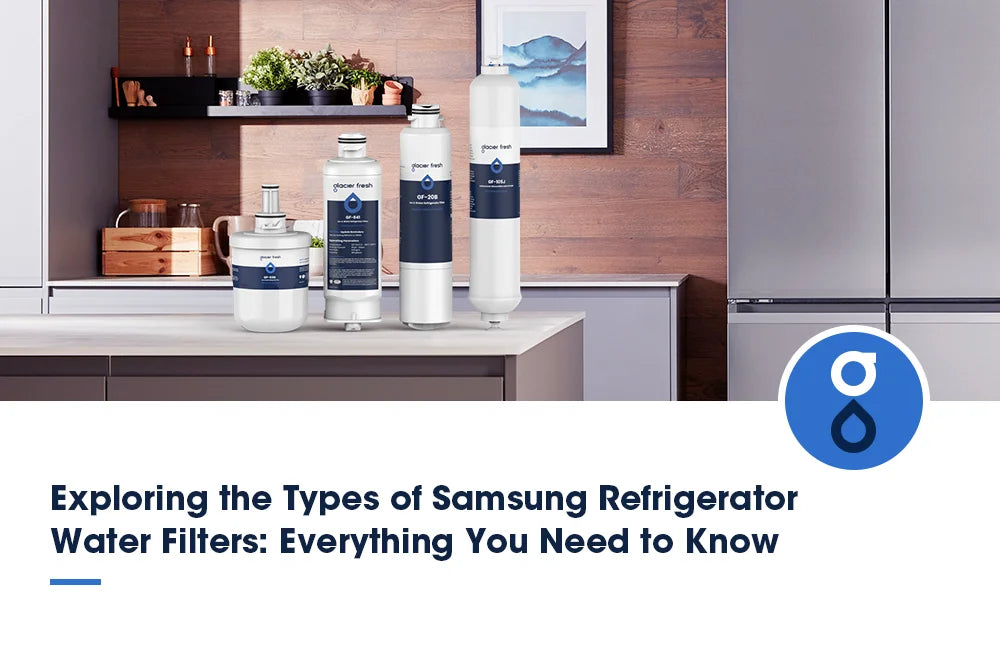Table of Contents:
Why maintenance is important for your reverse osmosis water system
Tip 1: Regularly inspect and clean pre-filters
Tip 2: Check and adjust water pressure
Tip 3: Replace carbon filters on a regular basis
Tip 4: Clean and sanitize the storage tank
Tip 5: Regularly test water quality and conductivity
Tip 6: Inspect and clean the membrane surface
Tip 7: Address fouling issues
Tip 8: Monitor recovery rates and adjust as needed
Tip 9: Address scaling issues
Tip 10: Seek professional assistance for complex maintenance tasks
Conclusion
Maintaining your reverse osmosis (RO) water system is essential to ensure optimal performance in providing clean, purified water. Regular maintenance not only extends your RO system's lifespan but also helps preserve the quality and taste of the water it produces. In this article, we will provide you with the top 10 maintenance tips to keep your reverse osmosis water system in peak condition, allowing you to enjoy pure and refreshing water for years.
Why maintenance is important for your reverse osmosis water system
Maintaining your reverse osmosis water system is crucial to ensure optimal performance and longevity. Maintenance can't be overstated when it comes to maximizing the efficiency of your water system.
Implementing preventative care measures extends the system's longevity and paves the way for significant cost savings in the long run. Neglecting maintenance can lead to a decline in performance, increased energy consumption, and potential system malfunctions. Regular check-ups and timely replacements of filters and membranes are essential to uphold the efficiency of your reverse osmosis water system. Preventative maintenance enhances the quality of water produced and safeguards the system from damage.
Tip 1: Regularly inspect and clean pre-filters

Inspect and clean the pre-filters regularly to maintain the optimal performance of your reverse osmosis water system. Proper filter maintenance is vital to ensuring the longevity and efficiency of your system. Here are some essential aspects to consider for effective pre-filter maintenance:

Tip 2: Check and adjust water pressure
Checking and adjusting the water pressure in your reverse osmosis water system ensures optimal performance. Pressure regulation is key in optimizing system efficiency, performance enhancement, and maintenance benefits.
Incorrect water pressure can negatively impact the functioning of your reverse osmosis system, affecting its ability to filter water effectively and efficiently. To maintain peak performance, regularly monitor the water pressure gauge on your system and make adjustments as needed.
By ensuring that the water pressure is within the recommended range, you can prevent damage to the system components and prolong the lifespan of your reverse osmosis unit. High pressure can strain the system, leading to leaks or malfunctions, while low pressure can result in reduced water production and quality.
Tip 3: Replace carbon filters on a regular basis

Ensure you regularly replace the carbon filters for optimal performance and water quality maintenance in your reverse osmosis system. Carbon filters play a crucial role in purification by removing impurities and contaminants, ensuring your water is clean and safe. To maintain the effectiveness of your system, it's essential to adhere to a proper maintenance schedule for replacing these filters. To highlight the importance of replacing carbon filters, let's look at a comparison table showcasing key aspects related to filter replacement:

Tip 4: Clean and sanitize the storage tank
Ensuring the cleanliness and sanitation of your storage tank is essential for maintaining the quality of water produced by your reverse osmosis system. Regular tank maintenance is crucial to prevent contamination and ensure the purity of the water stored in the reservoir. To maintain storage cleanliness, it's recommended to clean the tank at least once every six months. Start by turning off the water supply to the system and draining the tank completely.
The sanitization process involves using water and bleach to disinfect the tank thoroughly. After adding the cleaning solution, let it sit for a few hours before rinsing the tank with clean water. This process helps eliminate bacteria and other impurities that may have accumulated in the water reservoir over time. Proper system hygiene ensures the quality of your drinking water and prolongs the lifespan of your reverse osmosis system. By following these steps for tank maintenance, you can enjoy clean and healthy water from your system.
Tip 5: Regularly test water quality and conductivity

Regularly testing the water quality and conductivity is key to maintaining the effectiveness of your reverse osmosis water system. Water purity ensures your system functions optimally and provides clean, safe drinking water. Monitoring conductivity levels can indicate the presence of impurities or contaminants in the water that may affect the system's performance. By conducting routine tests using appropriate testing methods, you can proactively identify issues and take corrective actions promptly.
Quality assurance is crucial in maintaining the efficiency of your reverse osmosis system. Establishing a regular maintenance schedule that includes testing the water quality and conductivity will help you stay ahead of potential problems. By incorporating these tests into your maintenance routine, you can ensure that your system continues to operate at peak performance levels, providing your household with high-quality drinking water.
Tip 6: Inspect and clean the membrane surface
Regularly examining and cleaning the membrane surface is vital to maintaining your reverse osmosis water system. The membrane is crucial for the system's performance and longevity. By inspecting the surface, you can identify any buildup, debris, or damage affecting its efficiency.
Cleaning techniques vary but typically involve using a mild detergent or a manufacturer-recommended cleaning solution. The frequency of membrane cleaning depends on the quality of your water source and the system's usage. Cleaning too often can damage the membrane while cleaning too infrequently can lead to decreased performance and potentially costly repairs.
Tip 7: Address fouling issues
Inspecting and addressing fouling issues in your reverse osmosis water system is critical to maintaining efficiency and prolonging lifespan. Fouling prevention is crucial to ensure that contaminants, debris, or biological growth don't accumulate on the membrane surface, which can negatively impact the system's performance. Regularly inspecting the system for any signs of fouling and promptly addressing them with appropriate fouling solutions will help maintain optimal system efficiency and water purity.
Proper membrane care is essential in preventing fouling issues. Follow manufacturer recommendations for cleaning and replacing membranes to avoid fouling and ensure the longevity of your system. Additionally, implementing a routine maintenance schedule that includes membrane inspections and cleanings can significantly reduce the risk of fouling.
Tip 8: Monitor recovery rates and adjust as needed

Monitoring recovery rates and making necessary adjustments is crucial for ensuring the optimal performance of your reverse osmosis water system. By focusing on recovery rate optimization, you can enhance the efficiency of your system and improve water production. Regular performance monitoring allows you to identify deviations from the expected recovery rates and promptly take corrective actions.
Efficiency improvement is directly linked to your system's recovery rate. To maintain peak performance, monitoring the amount of purified water produced compared to the total water processed is essential. If you notice a decrease in the recovery rate, adjustments to the system settings may be required to restore optimal operation. These system adjustments can include modifying the pressure settings, checking for clogs or blockages, or ensuring the pre-filters are clean and functioning correctly.
Tip 9: Address scaling issues
Are you concerned about the impact of scaling on your reverse osmosis water system's performance? Scaling, caused by mineral buildup, can reduce efficiency and lead to costly repairs. To address scaling effectively, consider the following:
- Scaling Prevention Techniques: Implement regular system flushing and use anti-scaling agents to prevent mineral buildup.
- Water Softening Solutions: Install a water softener before the RO system to reduce the hardness of the water entering the system.
- Scaling Removal Methods: Utilize citric acid or vinegar solutions to dissolve scale deposits in the system.
Scaling affects the performance of your RO system and increases maintenance costs over time. By proactively addressing scaling through prevention techniques and regular maintenance, you can ensure optimal performance and prolong the lifespan of your system. Prevention is key to avoiding the hassle and expense of scaling-related issues.
Tip 10: Seek professional assistance for complex maintenance tasks

Consider seeking professional assistance to ensure proper care of your reverse osmosis water system like Undersink RO Water Filter System for complex maintenance tasks. While many routine maintenance tasks can be handled through DIY maintenance following a troubleshooting guide, specific issues may require specialized knowledge and tools that a professional can provide. When dealing with complex maintenance tasks such as intricate repairs or intricate system adjustments, it's crucial to weigh the benefits of professional expertise against the potential risks of DIY repairs.
Seeking professional help can also help you understand the maintenance costs involved and make informed decisions about preventive measures to extend the lifespan of your reverse osmosis water system. Professionals can offer valuable insights into potential issues that may arise, helping you take proactive steps to avoid costly repairs in the future. By utilizing the services of a qualified technician, you can ensure that your reverse osmosis water system operates at its peak performance for years to come.
Conclusion
Follow these top 10 maintenance tips to keep your reverse osmosis water system running smoothly. Regularly inspecting and cleaning filters, adjusting water pressure, and addressing any issues promptly will ensure peak performance. Remember to replace filters, clean the storage tank, and seek professional assistance for complex tasks. With proper maintenance, your reverse osmosis system will continue providing you with clean, great-tasting water for years. Follow Glacier Fresh to find more water filtration solutions.
















